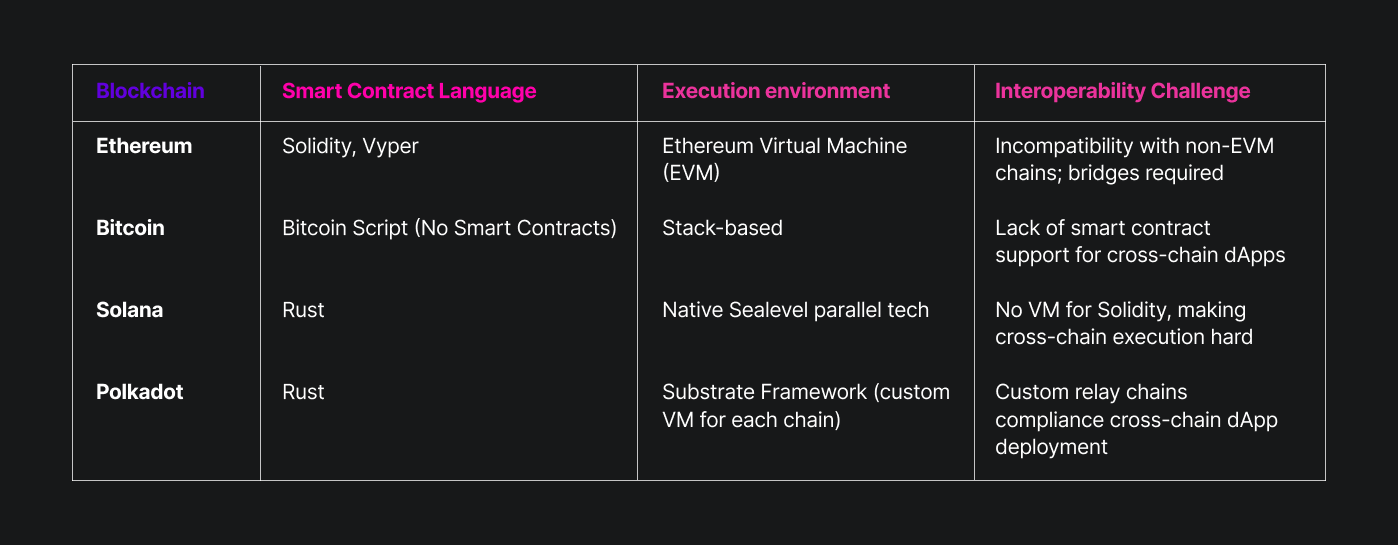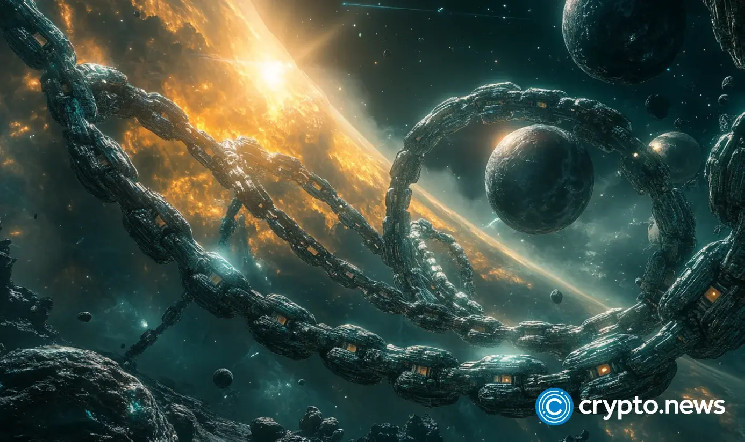Disclosure: The views and opinions expressed right here belong solely to the creator and don’t characterize the views and opinions of crypto.information’ editorial.
Think about a world the place each nation had its personal web—one for France, one for Japan, one for the U.S.—and none of them may discuss to one another. Your emails wouldn’t be despatched throughout borders, social media could be confined to your nation and world commerce. Only a multi-billion greenback modern dream caught in walled gardens. That’s precisely the place blockchain is immediately.
You may additionally like: As AI rewrites historical past, blockchain expertise is a line of protection | Opinion
The phantasm of progress driving the innovation dilemma
Each technological revolution begins with an obsession: how can we push the boundaries of what’s attainable? In blockchain, this has typically meant sooner transactions, cheaper charges, and better scalability. However historical past tells us one thing totally different. Innovation not often follows a linear path. As a substitute, the applied sciences that reshape industries don’t simply increase; they redefine the very limits that constrain them.
Take the web. Its early days have been outlined by walled gardens—AOL, CompuServe, and Microsoft Community. Every tried to construct its personal ecosystem, capturing worth by proscribing interoperability. However because the open internet emerged, these walled gardens crumbled. The web didn’t succeed as a result of it eliminated constraints; it succeeded as a result of it redefined them—creating protocols (HTTP, SMTP, TCP/IP) that enabled trustless, seamless communication.
Blockchain is at the same crossroads. The obsession with scalability has led to fragmented options—rollups, sidechains, and various layer-1 blockchains—every fixing a particular concern however including complexity to the broader ecosystem. However within the rush to scale, we’ve missed one essential ingredient: connectivity.
The blockchain house wasn’t meant to be a group of walled gardens, but that’s what it has grow to be. The results? A handful of key inefficiencies:
- Poor person expertise: Strive shifting belongings from Ethereum (ETH) to Solana (SOL), Bitcoin (BTC), or Cosmos Hub (ATOM). It’s like assembling IKEA furnishings with out the guide—doable however unnecessarily painful.
- Siloed innovation: Builders are constructing unimaginable purposes, however many stay confined to a single chain. The end result? Restricted customers, lack of adoption.
- Fragmented liquidity: DeFi purposes battle to function throughout chains, and liquidity is fractured. Customers have to leap by way of hoops (and a number of wallets) simply to execute easy transactions. So, everybody sticks to chains which might be inside their working consolation zone.
So, the actual query isn’t simply the right way to scale or handle the best transactions per second but in addition the right way to rethink some elementary constraints that outline blockchain’s future.
The constraint that issues: Interoperability, not execution
As of 2024, there are over 120 L1 blockchains and dozens of L2 options. In response to Electrical Capital’s Developer report, the variety of energetic builders throughout all blockchain tasks grew by 60% in 2023, with new chains and options persevering with to emerge.
Every blockchain has its personal consensus mechanism, execution setting, and tokenomics working with its energy inside its silo. As an example, Ethereum makes use of the Ethereum Digital Machine (EVM) and Solidity for good contract growth, whereas Solana employs a distinct structure with languages like Rust. This range, whereas fostering innovation in their very own ecosystem, creates important boundaries to seamless interplay between chains.
Interoperability between chains with such elementary variations—in coding languages, digital machines, and execution paradigms—requires extra than simply bridging belongings. It means overcoming important architectural and technological boundaries.

And to resolve these points, we constructed bridges—actually.
The bridges we constructed… and why they preserve breaking
Wrapped tokens, liquidity hubs, cross-chain messaging programs—every promised a seamless expertise, however every got here with trade-offs. Safety vulnerabilities. Sluggish speeds. Cumbersome processes.
Bridges, of their present kind, are like duct tape on a leaky pipe. They work—till they don’t.
The coding language variations and the shortage of widespread digital machines drive up the price of constructing bridges and integration layers between blockchains. Each time a developer builds a cross-chain bridge or interoperability layer, they have to account for:
- Language translation: Changing between Solidity, Rust, or Bitcoin’s script isn’t solely time-consuming however error-prone. In 2023, over 60% of energetic blockchain builders have been engaged on interoperability options, spending a median of 1.5x extra time troubleshooting and debugging cross-chain logic than single-chain purposes.
- VM compatibility: Bridging the EVM and Solana’s proof-of-history or Bitcoin’s script is much from simple. That’s as a result of it’s not merely about shifting tokens from one chain to a different—it’s about making certain that the logic behind decentralized purposes is appropriate throughout totally different execution environments.
- Safety dangers: The extra interoperability layers you introduce between totally different ecosystems, the extra potential there’s for vulnerabilities, as hackers have extra entry factors to focus on. In response to a 2023 Chainalysis report, cross-chain bridges have been answerable for over $1 billion in losses resulting from safety breaches in 2022 alone—accounting for nearly 70% of all stolen funds within the blockchain house. The complexities concerned in ensuring that cross-chain interactions are safe can drive up the price of insurance coverage, audits, and ongoing monitoring. Actually, blockchain tasks at the moment are spending a median of $200,000 yearly on good contract audits and cybersecurity options, up from $50,000 simply two years in the past.
Every of those hurdles drives up developer’s prices and finally leads to a poor person expertise resulting from larger gasoline charges, transaction instances, and potential errors or failures in cross-chain purposes.
So what’s the longer term? As Ethereum co-founder Vitalik Buterin put it:
“The way forward for blockchain isn’t about being one of the best in a single space, however about being one of the best at working collectively.”
A brand new psychological mannequin: Composability builds interoperability
Interoperability is the enabler that has set the stage for composability.
Composability refers back to the means of assorted blockchain parts—resembling good contracts, protocols, and purposes—to work together seamlessly, enabling the creation of extra complicated and versatile functionalities. This modular strategy permits builders to construct upon present parts, fostering innovation and effectivity.
Within the context of blockchain interoperability, composability ensures that dApps can function throughout a number of chains. As an example, a DeFi software may leverage liquidity swimming pools from totally different blockchains, providing customers higher charges and extra choices.
As a result of, on the finish of the day, a quick blockchain is ineffective if it exists in isolation.
A presto. Driving off to constructing open highways.
Learn extra: The experiences of Ethereum’s demise are significantly exaggerated | Opinion
Davide Menegaldo
Davide Menegaldo is the CCO of Neon EVM. He has been on the forefront of blockchain innovation since late 2013. With a decade of expertise in blockchain and crypto, his curiosity areas embody web3, DeFi, staking, and NFTs. Davide launched into his entrepreneurial journey in 2015, founding his first startup to allow world charities to simply accept Bitcoin donations. He additionally facilitated neighborhood engagement and actively participated in native Bitcoin meetups and crypto conferences in Europe. In 2023, Davide launched into his journey with Neon Labs main industrial and enterprise fronts. He stays centered on driving the expansion chart at Neon EVM whereas heading the event of modern enterprise traces, nurturing strategic partnerships, and championing progress throughout each Solana and Ethereum blockchain ecosystems.









